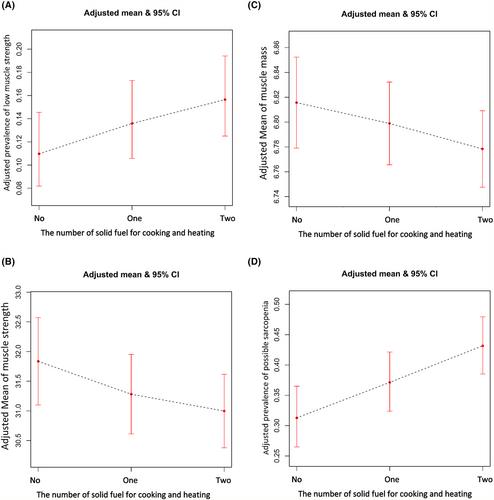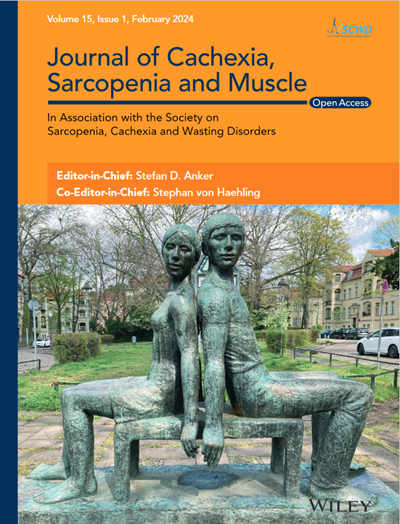Exposure to air pollution brings the advent effect for various diseases, but study about the relationship between air pollution and ageing is scant. We aimed to determine the associations between household air pollution for cooking and heating with muscle and sarcopenia in Chinese older population by a nationally representative study.
This cross-sectional study included individuals aged 60 and above from the China Health and Retirement Longitudinal Study between 2011 and 2015. The diagnosis of sarcopenia was defined by low muscle mass with low muscle strength and/or reduced physical performance. Generalized additive analyses and dose-dependent analyses with three models were used to assess the effects of different pattern of cooking and heating on muscle and sarcopenia.
A total of 8126 Chinese older individuals with predominant male (53.7%) and mean age of 67.3 ± 6.0 years were included in our study. Solid fuel use in cooking showed significant declines in muscle strength (β = −0.424, 95% CI: −0.767, −0.082, P = 0.01 in model 3) and mass (β = −0.034, 95% CI: −0.051, −0.017, P < 0.01 in model 3), when compared with clean fuel use in cooking, respectively. Solid fuel for heating was correlated with lower muscle strength (β = −0.637, 95% CI: −1.033, −0.241, P < 0.01 in model 3) than clean fuel for heating. The joint use of solid fuel for cooking and heating was associated with reduced muscle strength (β = −0.835, 95% CI: −1.306, −0.365, P < 0.01 in model 3) and mass (β = −0.038, 95% CI: −0.061, −0.015, P < 0.01 in model 3) than clean fuel for cooking and heating. Solid fuel for cooking was associated with significantly increased risk of low muscle strength (adjusted OR = 1.29, 95% CI: 1.11, 1.50, P < 0.01 in model 3) and mass (adjusted OR = 1.35, 95% CI: 1.11, 1.61, P < 0.01 in model 3), possible sarcopenia (adjusted OR = 1.33, 95% CI: 1.19, 1.48, P < 0.01 in model 3) and sarcopenia (adjusted OR = 1.44, 95% CI: 1.21, 1.72, P < 0.01 in model 3) compared with clean fuel for cooking. Solid fuel for heating had a significant correlation with low muscle strength (adjusted OR = 1.30, 95% CI: 1.09, 1.56, P < 0.01 in model 3) and possible sarcopenia (adjusted OR = 1.49, 95% CI: 1.31, 1.70, P < 0.01 in model 3). Dose-dependent manner was shown in the associations between the number of solid fuel with low muscle strength and possible sarcopenia. Clean fuel for cooking and solid fuel for heating was positively associated with the prevalence of possible sarcopenia than clean fuel for cooking and heating (adjusted OR = 1.34, 95% CI: 1.14, 1.57, P < 0.01 in model 3).
Our findings suggested that solid fuel for cooking and the number of solid fuel use potentially facilitates the onset and progression of muscle loss and sarcopenia.



